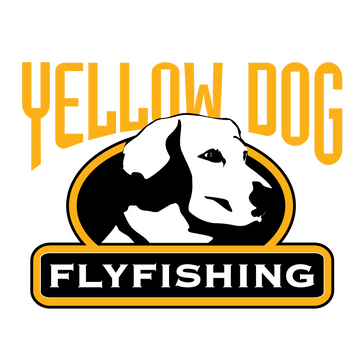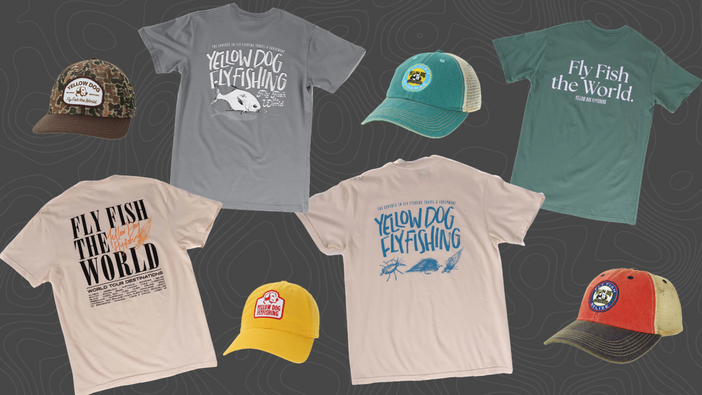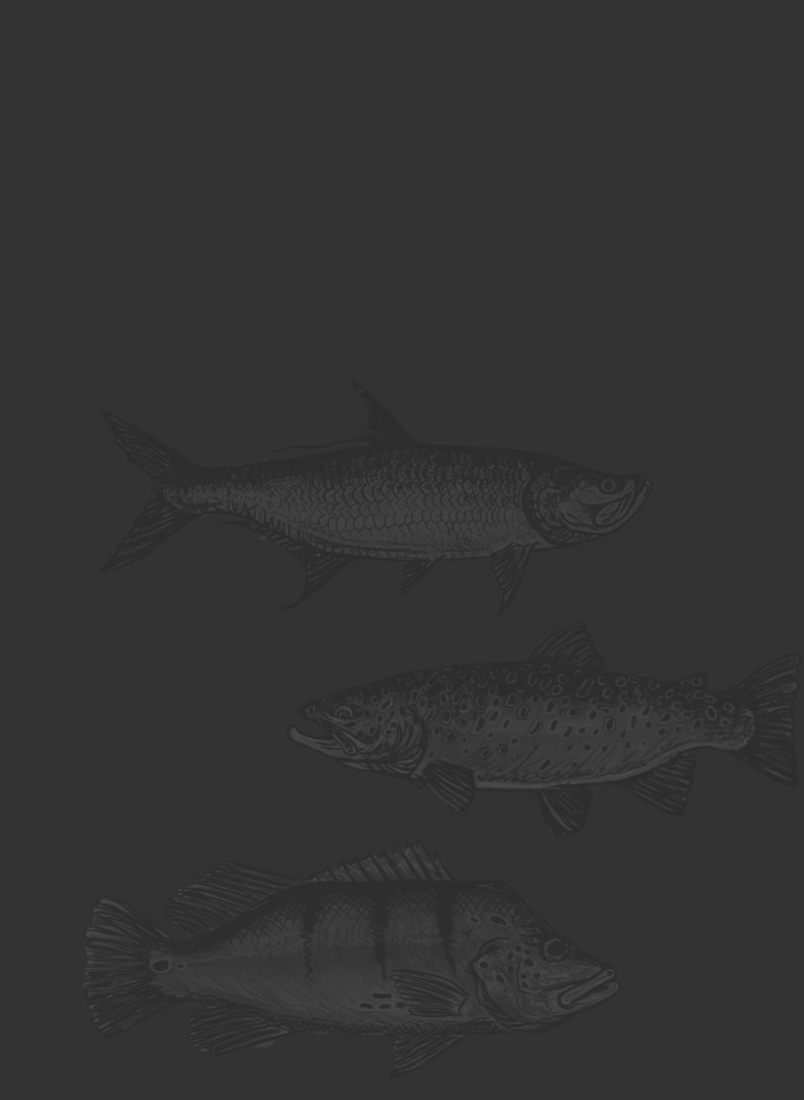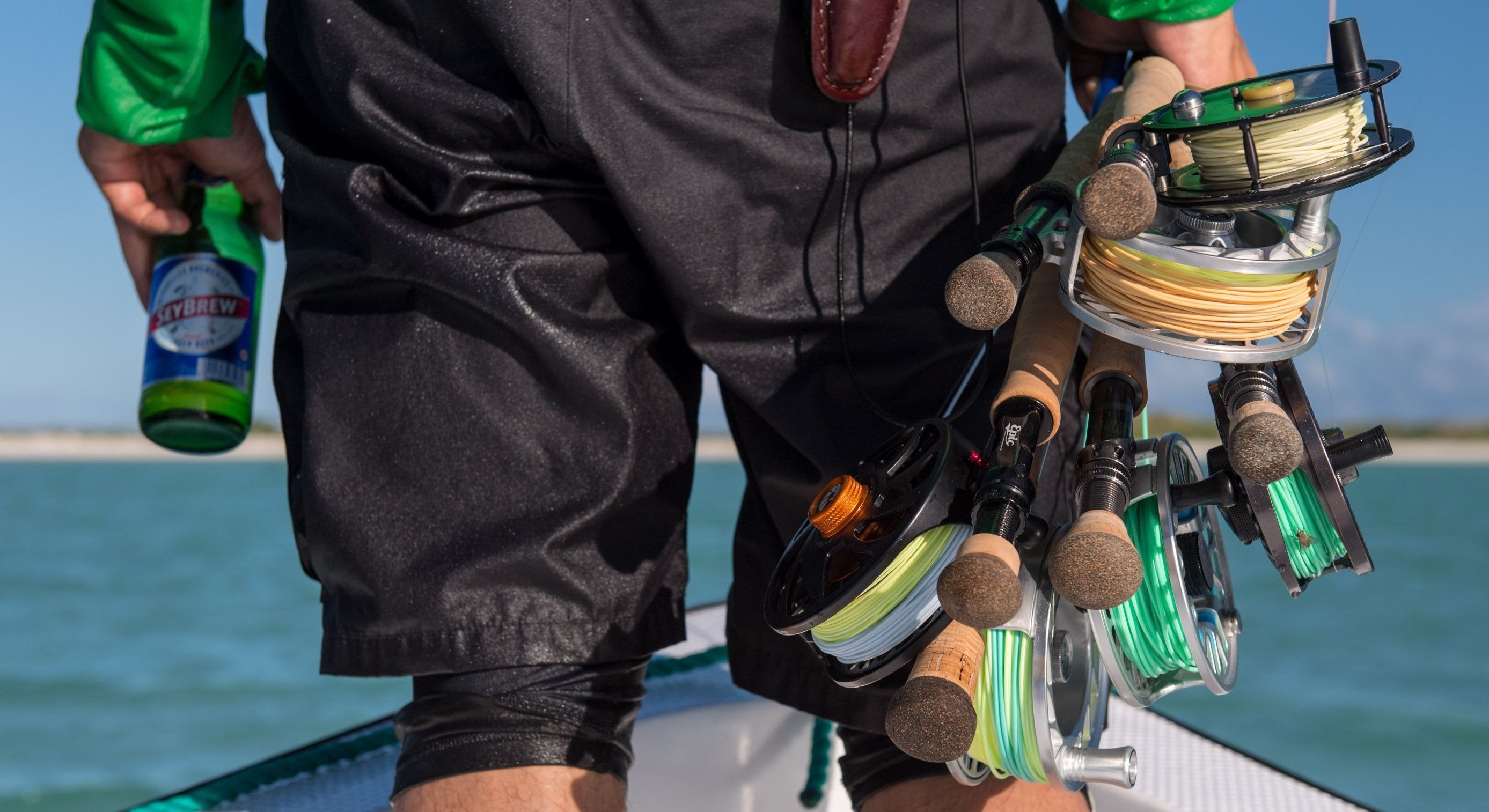"The Last Frontier" is one of the single most diverse freshwater fisheries on earth, with many lifetimes worth of rivers, streams, lakes, and saltwater to explore. Yellow Dog works with lodges throughout Alaska, including Bristol Bay, Tongass National Forest, and the Yukon Drainages. These areas are home to a remarkable selection of freshwater species, including massive resident rainbow trout, five species of Pacific salmon, steelhead, Arctic char, Dolly Varden, pike, and more. It is, simply put, one of the great treasures in the world of freshwater fly fishing.
Packing for a week in Alaska will depend heavily on a few factors, including type of lodge, season of travel, and target species. Additionally, some lodges provide anglers with waders and boots, rod and reel setups, and all the terminal tackle and flies an angler could need. One of the primary considerations to make when packing for Alaska is the maximum luggage capacity of most planes. Given the remoteness of Alaska, most everything a lodge needs is flown in and out, so there is very little room for excess! With that said, we always recommend anglers bring the wading setup they prefer, as well as preferred rod and reel setups to ensure anglers have the best fishing experience possible.
For destination-specific fly fishing fly and gear recommendations for destinations throughout Alaska, follow the link below:
What Rods Should I Bring?
Packing rods for Alaska is fairly straightforward, depending on what species you plan on targeting.
Trout, Arctic Char, Dolly Varden, Grayling
Instead of packing a rod for each of these species, a 9 or 10-foot, 6 or 7-weight is the best all-around. While anglers regularly target trout in the west with a 4, 5, or 6-weight, there are a few key factors to consider when heading to Alaska. Firstly, you're casting quite a bit over a week's fishing trip, so a heavier rod helps prevent soreness in your casting arm.
Secondly, the trout species of Alaska are feeding in nutrient-rich environments, especially post-salmon spawn. For that reason, they put up a fight and your standard 9' 5-weight may leave you "undergunned."
Finally, a 6 or 7-weight gives the angler a good all-around foundation for targeting species in a variety of methods. A slightly heavier rod makes transitioning between dry flies, streamers, and nymphs a bit smoother.
Pacific Salmon
With the exception of King salmon, a 9' 8-weight generally suits all anglers and covers most scenarios. King, or Chinook, salmon are a different breed and a bit more backbone is necessary. Often, these fish are targeted deeper in the water column with sinking lines, so a 9' 9 or 10-weight.
Steelhead and Pike
A 9 or 10' 8-weight is a great all-around rod for Alaskan steelhead, and anglers hoping to target pike should rely on a 9' 10-weight.
In all scenarios, we recommend anglers bring with them a back up setup. An extra 8-weight in your luggage could be utilized for throwing streamers or for targeting Pacific salmon after you have caught your fill of rainbow trout. Additionally, incidentals do happen, so having a backup rod is crucial in the event of a broken rod!
Selecting the Right Reel
A durable, strong drag system is a must to apply the brakes to many of Alaska's native species. A 24-inch rainbow, Pacific salmon, or steelhead can easily take an angler into their backing, so having a high-quality reel designed for tackling saltwater species is always a safe bet.
-
Built to Last: Make sure the reel is anodized--a process that strengthens the aluminum most reels are made of. Anodized reels are more durable and can stand up to demanding conditions. The last thing you want is to drop your reel on a rock only for it to dent or bend, and a fully-machined reel will prevent any sort of issues beyond minor cosmetic wear and tear.
-
Backing: Selecting backing for Alaska is fairly straightforward--150-200 yards of 20# backing is going to cover you in most scenarios, though Chinook salmon may require more. To be safe, 200+ yards of 20-30# backing is ideal for a large King.
-
Mid-to-Large Arbor: A reel's arbor is the component where line and backing are stored and determines how quickly you can retrieve the line. A larger arbor means anglers can reel in more line with each rotation of the reel handle. Having that ability to keep tension on a salmon or large trout will help you land the fish faster and more effectively.
Choosing A Fly Line
The single most important factor when selecting a fly line for Alaska is ensuring it is a freshwater fly line rated for cold water environments. A tropical line will undoubtedly fail you here.
-
Trout: A weight-forward, floating line. Lines with heavy heads will allow for ease of shooting line over a week of intense fishing. While exhaustion from casting and fighting fish is a good problem to have, ease of casting will keep you fresh. A secondary sink tip line can be very useful if an angler wants to spend part of their week focused on fishing streamers.
-
Salmon/Steelhead: For salmon, both a floating and sink-tip line are recommended. For steelhead, a weight-forward floating line is recommended.
-
King Salmon: For Kings, a sinking line is recommended in the 350-400 grain range.
- Pike: Both a floating and intermediate line are recommended to allow for targeting fish at a variety of depths.

Leaders & Tippet
Fish in Alaska are not generally leader-shy so anglers can leave the 4x and smaller at home. Leaders in the 0x-2x range are recommended, with additional spools of 0x-3x tippet. A few leaders is usually all an angler needs for a week of fishing.
The one caveat is pike--if you are planning on targeting on these apex predators, 30# bite wire tippet or stronger is an absolute must.
Wading Gear
Aside from your rod and reel, good wading gear might be the single most important investment an angler can make for fishing in Alaska.
High-quality, breathable Goretex waders are non-negotiable if you want to remain comfortable, and there are a number of great options on the market from Simms, Patagonia, Grundens, Skwala, and Orvis. Some lodges can provide waders to clients, but the only way to guarantee a comfortable fit over a week of fishing is to have your own preferred pair.
Something all anglers should know before they travel to Alaska is that felt-sole wading boots are outlawed, so rubber or vibram soles are a must. It is not uncommon to fish long days in Alaska, so having comfortable, supportive footwear will allow you to navigate area rivers and keep you focused on the fishing. If you prefer to use studs, make sure they are removable -- they are not ideal in planes and drift boats when taxying to and from fishing.
When selecting boots that will accommodate a stockingfoot and a pair of thick wool socks, many anglers size up. Rounding up to the next size is a safe way to ensure your boot is large enough to accommodate your layers and insulation, while also remaining functional and safe for wading.
+ The Ultimate Guide to Wading Boots

Building Your Fly Box
Building your fly box for Alaska depends on the season you are traveling and your final destination. For trout species, early season offers variety, allowing for targeting fish on nymph, dry flies, and streamer patterns resembling sculpins, fry, and leeches. But once the salmon enter the river midseason, priorities shift. The annual salmon runs are the backbone of the watershed's food chain, so pegging beads that resemble salmon roe, egg patterns, and flesh-flies imitating decaying salmon are incredibly productive throughout this period.
Toward the end of the season, nymphing and streamers dominate the approach in pursuit of trophy fish. This time is less about numbers, and more about perhaps hooking up with that fish of a lifetime. For anglers who prefer to not worry about bringing flies, many lodges can provide their anglers with flies during their stay.
If you would prefer to have a box of hand-selected flies for Alaska, we have you covered.
Trout Flies
Streamers
Basic streamer patterns work well in Alaska, and sculpin, fry, and leech imitations are common. Additionally, attractor streamers tied with bright colors work well for both trout and salmon.
- Dolly Llama (Olive/White, Chartreuse/Pink, Black/White)
- Sculpzilla (Olive/Tan, Black)
- Leechman
- Bead Head Bugger (Olive, Black, Brown)
- Sparkle Minnow
Mouse Flies
Skating and stripping mouse flies is one of the single most exciting way to target Alaska's rainbow trout due to the visual nature of the take. Early and late season are a great time to throw mouse flies.
- Morrish Mouse
- Morrish Mouse 2.0
- Mr. Hankey
Dry Flies
Some dry fly staples are ideal for rainbow trout, especially before the salmon runs, and grayling are always eager to pounce on a big dry.
- Rubberleg Stimulator
- Purple Parachute Adams
- Elk Hair Caddis
- Royal PMX
Nymphs
Nymphing is effective all season long throughout Alaska, and large, common nymphs are the ticket. For sheer numbers, this is going to be an angler's bread and butter when targeting trout.
For targeting other species in Alaska, check out Yellow Dog's dedicated webpages:
Apparel, Packs, and Must-Haves
-
Clothing: Layering clothing effectively is crucial to stay comfortable and focused on the fishing. Start with a moisture-wicking base layer to regulate body temperature and keep sweat away from the skin--capilene and merino wool are two of the most common materials.
Next, add an insulating layer like a fleece or down jacket to trap warmth. Temperatures can reach in the 70's during the summer, so removing this layer is always an option but you WILL want it at some point. You should approach your outer layer with the same approach you took for your waders--make the investment in a quality jacket. A Goretex, waterproof outer layer is a must-have for travel to Alaska.
Remember to wear quick-drying and breathable materials to avoid moisture buildup. Additionally, don't forget to wear insulated waterproof gloves, a hat, and thick socks to protect your extremities. Flexibility is key, so choose clothing that allows for freedom of movement while ensuring you stay warm and dry throughout the trip.
- Wading Pack: Everyone has their own preferences, but a pack to keep your essentials, flies, and tackle nearby is really helpful. Additionally, a waterproof pack can keep your items dry during a rain spell. A waterproof sling or hip pack is the perfect size for holding what you need without being too cumbersome over a long day.
- Polarized Lenses: Low-light causing a glare on the water or bright days making it difficult to track your fly are all possibilities, so having one or two pairs of polarized lenses can make a huge difference. For all-around lenses, copper or amber are generally preferred, though rose-colored can work well. For low-light conditions, a yellow or silver lens is helpful.
-
Luggage: The key to traveling to Alaska is packing everything you need, while still keeping things light. Most every lodge has its amenities brought to it via plane or boat including food and beverages, gasoline, and essentials--meaning space and weight are always carefully considered. Additionally, hard-bottomed luggage is not allowed, so having a single large, waterproof duffel to hold all of your clothing and waders, with a separate rod case for your fishing tackle, is generally the best approach.
- Sunscreen/Bug Spray: While much of your body is covered with clothing, we strongly recommend anglers bring sunscreen and strong bug-repellant. Flying insects such as mosquitos and noseeums are common, especially early in the season.
Contact Yellow Dog if you have further questions about fly fishing in Alaska or our shop for questions regarding gear, apparel, packs, and more!
Related Articles:
- The Top Alaska Fly Out Fishing Lodges
- 5 Luxury Fly Fishing Lodges in Alaska
- Fly-Out, Fix-Based, and Float Trips: What are the Differences?
More Gear Guides:

































